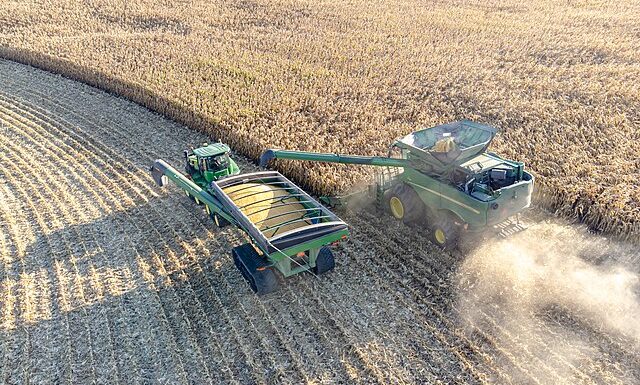Corn and soybean prices fell on the Chicago futures market on October 5, 2023 following progress in the North American fall harvest.
This was amid the mid-week weakening in oil prices that are cross-tied to the two biofuel grains. This has made experts circumspect about the sudden low demand in oil which also puts pressure on grain prices.
Corn, Soybean lose, wheat gains
For wheat, it was point counter point. Just a few days after Ukraine regained access to ship grains via the Black Sea, which eased prices, news that Australia and South American crops faced drought edged prices up again on Thursday.
Wheat notched up 0.5% in price to settle at a new high of $5.63 a bushel ($0.21 a kg).
Ag economists expect the wheat notch to last long as Ukraine’s 2024 wheat area has reduced due to poor rainfall. Combined with the drought effects in the Southern hemisphere, this is likely to extend the current price gains into 2024.
For corn, traders at the Chicago boarse registered a price drop of 0.5% from that of October 4. Corn price lowered to $4.83 per half bushel ($0.37 per 1/2 kg).
The same marginal price pressure applied to U.S. soybean contracts. They lost at least 0.7%, to trade at about $12.64 per bushel ($0.46 a kg).
Fair weather in the North American fall is also significantly better than earlier predictions of dry conditions, hence improved yields.
Price to rebound after North American Corn/Soybean season
The 2023 U.S. corn season ends this October and markets are expecting a price rebound as soon as supplies ebb.
With some major corn-exporting nations across the globe battling drought, traders expect price recovery soon. Australia, for instance, expects farm incomes from grain and livestock to slide by 41% in the current market year.
The soybean harvest in the US will last till November, which makes it difficult to predict a price rebound timeline.
But there are areas where corn and soybean trade can attain bullish takes despite losses on the main crops. For example, traders in Chicago were selling soymeal 1% more on September 26, 2023 while soy prices were falling.
This shows that there is still hope in a bleak price future for corn and soybeans, especially post-U.S. harvest.
